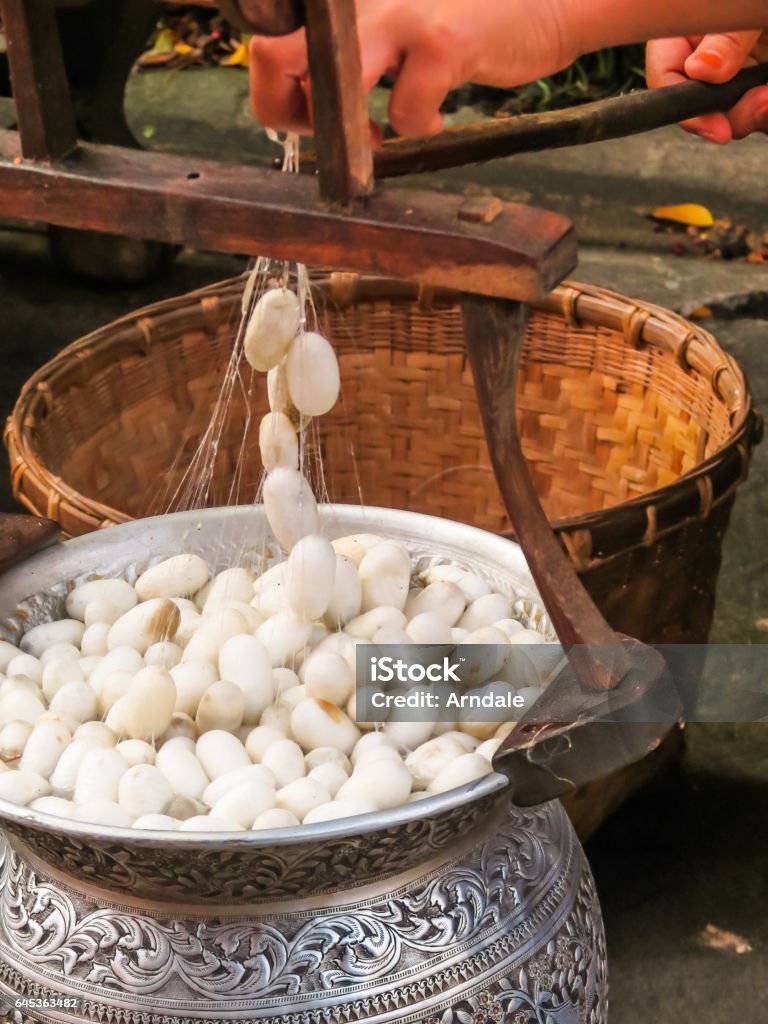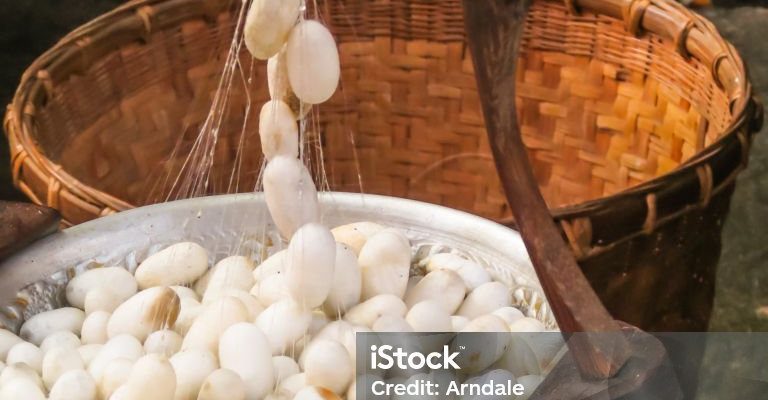
In this guide, we’ll take a deep dive into **preparing silkworms for commercial cocoon production**. It’s not just about feeding the worms and waiting for them to spin; there’s a whole rhythm and technique to it. Let’s explore everything from selecting the right silkworm variety to managing their environment, ensuring they thrive and produce high-quality cocoons.
Choosing the Right Silkworm Varieties
One of the first steps in preparing silkworms for commercial cocoon production is selecting the right variety. There are numerous types of silkworms, but the **Bombyx mori** is the most commonly raised for silk production. It’s like choosing the right breed of dog based on your lifestyle—each breed has its characteristics and needs.
When picking your silkworms, consider factors like the type of silk you want and your local climate. Some varieties are better suited for warmer environments, while others thrive in cooler conditions. You might want to choose hybrids that are known for their rapid growth and high cocoon yield. You can visit local sericulture supply stores or online platforms to find reputable sources for quality silkworm eggs.
Key Varieties to Consider
When starting out, consider these popular silkworm varieties:
- Bombyx mori: The classic choice, known for its high-quality silk.
- Japanese Silk Moth: Another plentiful producer with a gentle disposition.
- Indian Silk Moth: Often used in tropical regions due to its heat tolerance.
Choosing the right silkworm variety lays the foundation for successful cocoon production, making this initial step crucial to your silkworm farming journey.
Setting Up the Ideal Environment
Once you’ve got your silkworm variety sorted, it’s time to create the perfect environment for them. Imagine setting up a cozy home for a pet; you want them to feel safe and comfortable. Silkworms need a controlled environment that mimics their natural habitat.
The ideal temperature for silkworms is around 25–28°C (77–82°F). You can use a simple thermometer and a space heater or cooler to maintain this. Humidity is equally important; a range of 60-70% is optimal. Too much or too little moisture can hinder their growth and even lead to diseases.
Creating a Comfortable Habitat
To create a warm, humid environment, consider these tips:
- Use a well-ventilated area, away from direct sunlight.
- Install a humidifier to maintain ideal humidity levels.
- Provide ample space for silk moths to roam as they grow.
Getting the environment right is key, much like setting an excellent stage for a performance. It sets the tone for how well your silkworms will thrive.
Feeding Your Silkworms
Feeding silkworms is often seen as the heart of their care. These little munchers thrive on fresh mulberry leaves, which are their primary food source. Think of their diets as a sort of buffet—varied and plentiful—to ensure they’re getting everything they need to grow strong and healthy.
You can also consider supplementing their diet with formulated silkworm feeds, especially if fresh leaves aren’t widely available. Just be sure to provide fresh food daily and remove any uneaten leaves to prevent mold growth, which can harm the silkworms.
Feeding Frequency and Quantity
Here’s how to approach feeding:
- Feed young silkworms (first to third instar) three to four times a day.
- Transition to a bigger feeding schedule (twice a day) as they grow.
- Always offer more food than what they can eat in one sitting to ensure they are well-fed.
With consistent feeding, your silkworms will grow quickly and be ready to spin their cocoons.
Managing Life Stages
Silkworms go through several life stages, called instars, before they’re ready to pupate. Understanding these stages is crucial for smooth production. During these growth phases, pay close attention to their behavior and condition.
Initially, they will be quite small and fragile, requiring delicate care. As they progress through the instars, they will shed their skin multiple times, a process called molting. This can be a bit alarming for new farmers, but it’s completely normal and a sign they’re growing.
Recognizing Growth Milestones
Here’s what to keep in mind:
- First Instar: Very small and only feeds on soft mulberry leaves.
- Third Instar: Noticeable size increase—double their length!
- Fifth Instar: This is when they grow the most and prepare for spinning.
Being in tune with these stages will prepare you for the next crucial step: cocoon production.
Preparing for the Cocoon Stage
Before silkworms can spin their cocoons, they need a little pampering. This is like hosting a farewell party before they take a big step into adulthood. You’ll need to provide clean, comfortable surfaces where they can spin their silk.
Materials like bamboo sticks or silk screens work well, allowing for proper airflow and easy collection later. Ensure that all surfaces are free from dirt and chemicals. This care helps secure a contamination-free environment during cocoon formation.
Creating Spinning Spaces
To set up their spinning space:
- Provide a clean, flat area with plenty of room.
- Use fine mesh or bamboo racks to support the cocoons as they form.
- Maintain a steady humidity level to help the silk strands stick together properly.
Setting up their spinning area with care will lead to beautiful, high-quality cocoons.
Harvesting the Cocoons
Once the silkworms start spinning, it’s time for the grand finale. The spinning process usually lasts around two to three days. After they’ve completed their cocoons, it’s essential to harvest them at the right time: just before they start to emerge as moths.
Here’s the thing: if you wait too long, you’ll lose the opportunity to collect the cocoons, as the moths will break free, ruining the silk.
Harvesting Techniques
Follow these quick steps for successful harvesting:
- Carefully collect the cocoons from the designated spinning area.
- Inspect them for quality—look for shiny, intact shells.
- Store cocoons in a cool, dry place until you’re ready to process the silk.
Harvesting is where all your work pays off, and the beauty of silk starts to reveal itself.
Preparing silkworms for commercial cocoon production is a journey of patience, dedication, and a fair bit of learning. From selecting the right varieties to managing their feeding and environment, each step is vital. By paying attention to the details and nurturing these little creatures, you can create a thriving silkworm farm ready to yield high-quality silk.
So gather your mulberry leaves, monitor that humidity, and enjoy the process. Launching into the world of silkworm farming might seem daunting at first, but once you get the hang of it, you’ll realize just how rewarding it can be. Happy farming!

